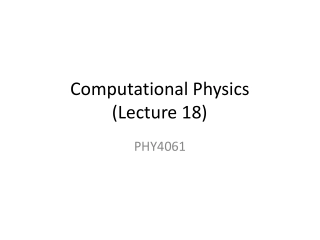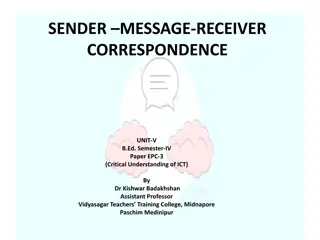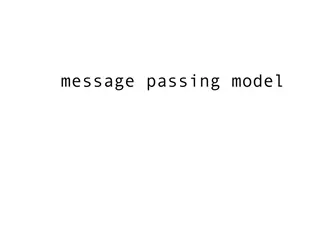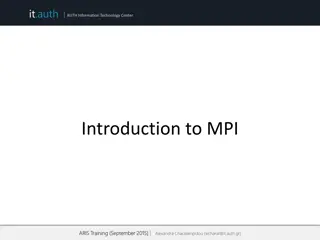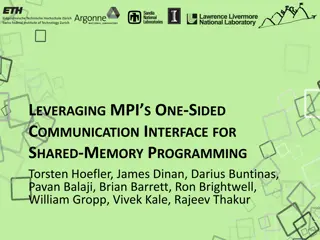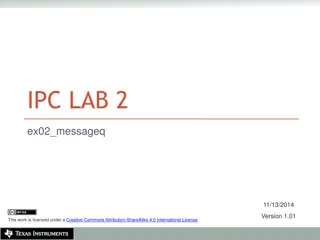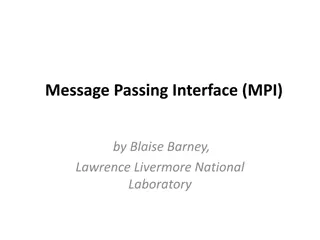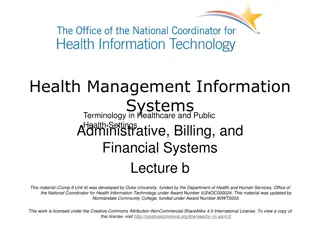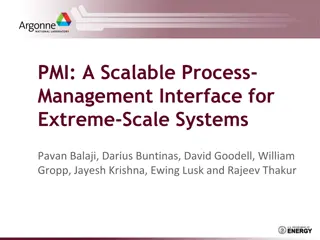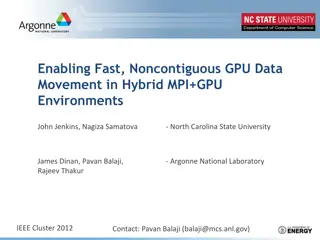Introduction to MPI: Basics of Message Passing Interface
Message Passing Interface (MPI) is a vital API for communication in distributed memory systems, enabling processes to exchange data and synchronize. This standard API supports scalable message passing programs, utilizing communication routines and library approach with features like topology. Learn about MPI's execution and data models, its simple yet comprehensive specifications, and its role in parallel programming for solving large problems efficiently.
Download Presentation

Please find below an Image/Link to download the presentation.
The content on the website is provided AS IS for your information and personal use only. It may not be sold, licensed, or shared on other websites without obtaining consent from the author.If you encounter any issues during the download, it is possible that the publisher has removed the file from their server.
You are allowed to download the files provided on this website for personal or commercial use, subject to the condition that they are used lawfully. All files are the property of their respective owners.
The content on the website is provided AS IS for your information and personal use only. It may not be sold, licensed, or shared on other websites without obtaining consent from the author.
E N D
Presentation Transcript
SESSION INTRODUCTION Nuclear fusion powers the Sun (left) and could be a source of energy in the future (right). Images courtesy of EPA/Corbis/NASA and EFDA-JET.
ATOMIC STRUCTURE Hydrogen atom Helium atom If an atom were blown up to the size of Wembley Stadium, its nucleus would only be the size of marble! Images courtesy of Wikipedia
ISOTOPES Percentage of all Hydrogen atoms occurring naturally 0.0115% Very Rare 99.9885%
RADIOACTIVITY Some combinations of Protons and Neutrons are unstable (right), but can become stable through radioactive decay emitting one of these particles: Gamma Ray (photon) Alpha Particle (Helium nucleus) Beta Minus Particle (electron) Beta Plus Particle (positron) The number of protons and neutrons determines which type of decay happens Image courtesy of Wikipedia
NUCLEAR FUSION Fusion occurs in the Sun s core. The light it produces takes 5,000 years to reach the surface and then a further 8 minutes to get to us. Images courtesy of NASA/SOHO
NUCLEAR FISSION 36 protons, 56 neutrons 92 protons, 144 neutrons 92 protons, 143 neutrons 56 protons, 85 neutrons Neutron captured in Uranium-235 nucleus Unstable nucleus breaks apart (fissures) to become stable. This is just one way it can split.
CHAIN REACTIONS Nuclear weapons rely on runaway chain reactions. The first atomic bombs used fission chain reactions (like that on the left) whereas in modern atomic weapons energy is released though both fission and fusion. Image courtesy of National Nuclear Security Administration
ROUNDUP Atomic nuclei are formed of protons and neutrons Isotopes of an element contain different numbers of neutrons Unstable nuclei undergo radioactive decay (alpha, beta, gamma) Fusion in the Sun combines protons forming Helium + lots of energy Fission splits heavy nuclei into lighter elements This can lead to a chain reaction of nuclear fission


